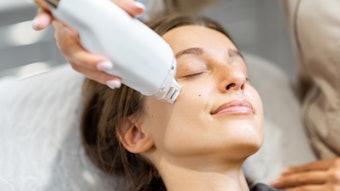Due to practical knowledge and technological advancements, the delivery of medical procedures and services is quicker and less intrusive than what was possible previously. This is especially true in the area of minimally invasive cosmetic procedures that use Botox1 and Restylane2 injections, microdermabrasion and intense pulsed light (IPL) to provide beautiful, healthy skin to clients on their lunch breaks.
Meanwhile, many medical practices are beginning to adopt a more client-friendly approach. Offerings such as drive-through prescription pickups and outpatient treatment services are designed to meet the practical needs of the client, whose view of health has evolved to encompass much more than what traditional medicine provides, particularly in the field of cosmetic medicine.
Many view beauty and health as complementary areas that create a new sense of wellness—a blend of physical vigor and mental relaxation. Thus, there is a new belief that a trip to the doctor’s office can, and should, accomplish more than just fixing a malady. It should provide a feeling of overall well-being.
The medical spa industry is dedicated to delivering a medical practice in a spa setting. In the simplest of terms, managing the business affairs of this type of spa is all about creating and reinforcing a service-oriented dimension in an established medical practice.
Targeting your clientele
The medical spa owner has to identify the business’ core clientele based on the demographics of the surrounding area, and then must design its marketing and business operations around that type of client. Will the establishment cater to a wealthier, high-end clientele? If so, the focus may not be on maximizing the number of appointments booked, but providing fewer clients with longer, more relaxing experiences that are laden with luxury amenities, such as lounge chairs, tea and massages. If the core client is budget-conscious and value-oriented, it may make sense to invest in sophisticated technology that enables faster procedures. This allows a business to serve more clients at a lower cost per appointment.
Planning elements
The spa’s owner, manager and medical director must coordinate their efforts in order to balance the administration of this type of facility. Once these boundaries have been determined, there are several planning elements that must go into building a solid medical spa foundation and identity.
First, funding must be secure. If the owner does not have the capital independently, there are several options for acquiring it. These include partnering with other independent entrepreneurs; soliciting an outside source, such as a venture capitalist; or even aligning the spa with a chain or franchise. For the less experienced spa owner, the latter provides not only financial footing, but also a framework for operation.
Another issue that needs to be addressed at this point in the process is the procurement of malpractice insurance. Similar to any medical practice, this is a medical spa’s basic legal protection. Make sure that the medical personnel have individual malpractice insurance plans of their own, but be aware that these will not protect the spa itself, which needs to secure its own separate coverage.
Managerial roles
Certain fundamentals of the relationship between the spa manager and the medical director must be understood before opening your spa. With a few exceptions, the medical director and spa manager’s partnership should be one in which the medical director oversees all aspects of the medical practice, essentially independent of the spa manager. The medical director should establish high standards for administering medical procedures, as well as for properly training the nursing team to accomplish them successfully.
Meanwhile, the spa manager should focus on conducting business operations and creating a customer service-oriented atmosphere. This includes hiring and training the nonmedical staff to ensure that they pamper clients and make them feel comfortable during every minute of their spa experience. The spa manager also has to arrange practices that differentiate the business from a traditional physician’s office. Clients should be able to make appointments within a week rather than wait more than a month, as is customary at many medical offices, and follow-up visits should be scheduled just as easily. Moreover, wait times for those appointments should be minimized considerably from those that are experienced at typical medical offices.
Deciding which, if any, nonmedical services—such as massage—would further complement a client’s feeling of wellness also is the responsibility of the spa manager. She should handle day-to-day business operations, such as bookkeeping, ordering nonmedical supplies, and dealing with landlord and space issues. One area of overlap between the two positions is the procurement of medical technology. The two parties need to balance the cost versus the reputation of each piece of equipment considered for the facility.
Keeping up
With the groundwork of financing, identifying target clientele, establishing procedures and filling staffing needs firmly in place, there are several aspects of ongoing management of which the spa owner needs to be aware. Although medical equipment for cosmetic procedures has evolved to produce healthier, better-looking skin at a reduced price, new technologies are on the horizon that will be smaller and more affordable, freeing up space and funds. In addition, just as technology has advanced to bring IPL and laser hair removal into the spa environment, new innovations may enable the delivery of other services that currently cannot be offered in this setting.
Spa owners also need to be aware of several legal and regulatory issues that involve all levels of government. Each treatment in the practice has to be approved by the U.S. Food and Drug Administration (FDA) or appropriate governing body. However, this is just the beginning of the bureaucracy that encompasses medical boards, nursing boards, cosmetology boards and boards of health. Further complicating matters is the fact that regulations for administration of these types of procedures vary widely from county to county and state to state. Although a responsible medical director will be familiar with these laws, all members of management should be cognizant of the specific regulations for the region in which they operate. (Editor’s note: The contact information for the licensing boards of all 50 states can be found on www.SkinInc.com.)
Also, it is imperative to monitor state and federal legislation for bill proposals that will affect your medical spa. For instance, the Massachusetts state Senate currently is deliberating a bill that would place restrictions on how minimally invasive procedures can be delivered, as well as on whom. If this legislation is approved, medical spas would have to be prepared to change their business practices accordingly in a short period of time. A quarterly audit of medical reports will ensure that the medical spa is working within the parameters of the applicable boards. This information can be found by contacting those boards in your state. Moreover, the medical director and spa manager must anticipate potential crises and have a specific plan of action for each scenario.
Client concerns
Of course, day-to-day client-relation issues will dominate management, because that is what sets a medical spa apart from a traditional medical practice. This encompasses common client concerns and how team members deal with them. For example, if a client complains that she should receive a discount but cannot produce a coupon, is it worth it to approve the price break in the hopes that the individual will become a repeat client? Do you feel comfortable giving your employees the autonomy to make these kinds of judgment calls? If your team members demonstrate solid problem-solving and people skills, it may be worthwhile to grant them that leeway.
Meeting the needs of the spa’s core clientele is essential. Always take note of the types of people receiving treatments. Did the core clients change from your initial target segment? Loyalty programs, including referral discounts, frequent customer rewards and rebates, also should be tested and evaluated. Identifying effective programs of this type is invaluable for maintaining clients. Similar to other retail businesses, attracting new customers is also a continuing challenge for spas, so spa owners must invest plenty of time in marketing, promotions and general relationship-building. Are there any local events at which the spa can demonstrate its services? Can the facility stage its own event to draw clients? Are there other partnerships that could be explored via the local chamber of commerce or with related services, such as cosmetic dentistry and laser eye surgery?
A wellness experience
Creating a relaxing environment in which clients receive more than just a treatment for blemishes fulfills the new expectation among consumers that health and beauty are part of a larger sense of wellness. Because of this, spa management must take the necessary steps to ensure that the facility provides the amenities, financing, staffing and marketing of any other retail establishment. When that happens, going to the doctor will be an experience—not just a necessity—for the consumer.
References
1 Botox is a registered trade name of Allergan, Inc., Irvine, CA.
2 Restylane is a registered trade name of Medicis Aesthetics Holdings Inc., Scottsdale, AZ.










